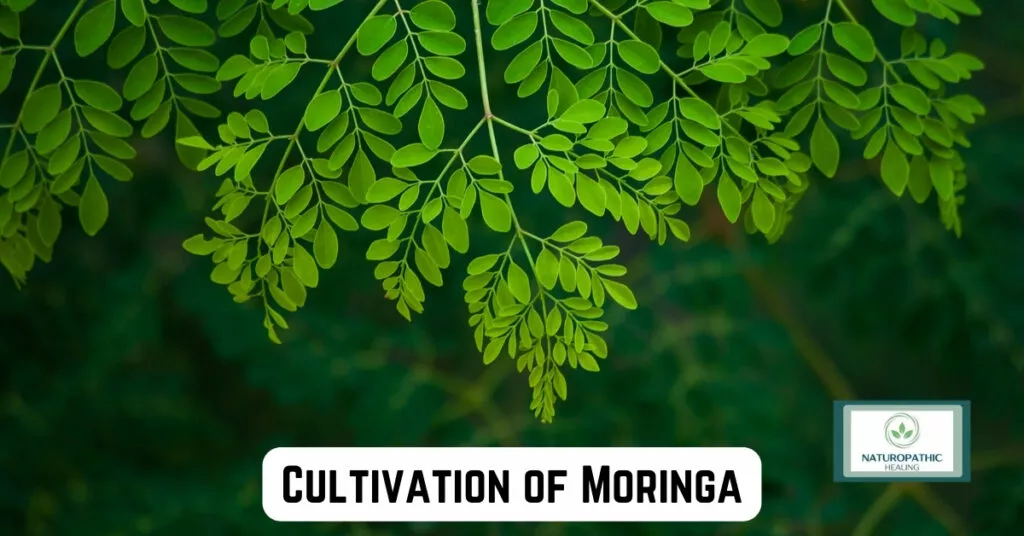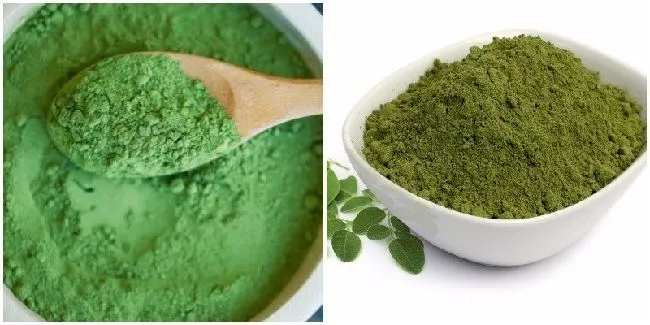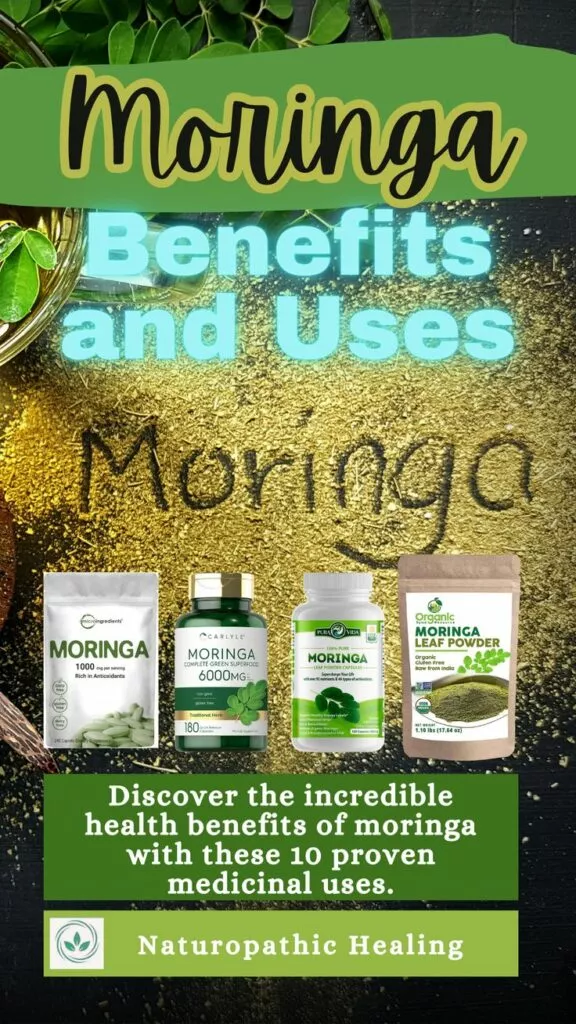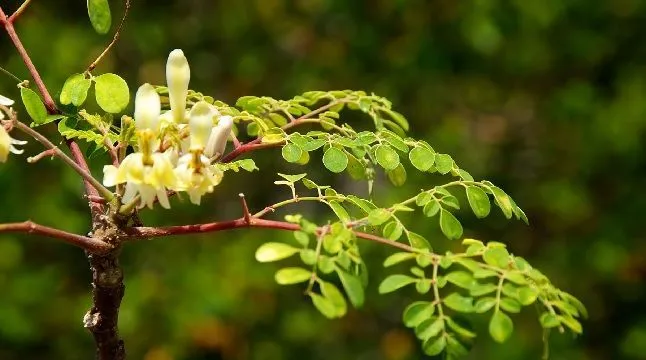It is no coincidence that they define moringa as the tree of life. It is known as Moringa oleifera, and is a tree native to India. It is an extremely adaptable species to any soil situation and irrigation conditions, so it arouses the interest of many communities that live in poor and desert areas.
However, in recent years several scientific investigations have been done where they have revealed their innumerable benefits.
The important thing about all this is that this type of medicinal plants are subjected to a scientific and medical evaluation to verify that the advantages of their use are contrasted.
Well, today we wanted to collect the 10 most important effects of moringa and some daily ways to take it. You can use it in the form of an extract, cream or even food capsules.
Table of Contents
The Tree of Life
Moringa is known as tree of life, because it offers a great nutritional contribution in a period of water and food scarcity. In the same way, it also allows to extract from this tree wood, oil from its seeds, its leaves and flowers are edible and also has uses in agriculture, as we will see later.
This species of tree develops in a common way in India and some countries bordering Asia. Its high rusticity allows it to grow in all types of soils and withstand extreme climates with high temperatures and high relative humidity.
In fact, in times of drought and in arid areas, locals use this tree to extract its oil and seeds from it. All parts of the tree are edible and taste pleasant.
The flowers can be eaten, they are rich in carbohydrates and their taste is sugary. From the leaves juices are prepared for salads, since it offers a somewhat spicy flavor (similar to watercress or canon).
Multipurpose use
It is not surprising that many qualify moringa as the tree of the future, since it can not only be used for gastronomic and medicinal purposes.
The pods it produces, where its seeds are located, contain a cationic polyelectrolyte which is used to purify water and remove turbidity. Something like a natural substitute for some industrial flocculants, such as aluminum sulfate, but biodegradable.
In agriculture, the leaves can be used as compost once they have been composted. From the roots can also be extracted extracts of oils that have fungicidal power.
For animal husbandry, its leaves can also be used for fodder since, as we have mentioned, they are totally edible.
From your oil high concentrations of unsaturated fatty acids can be extracted, considered beneficial for the body for their advantage in reducing cholesterol and triglycerides.
Cultivation of Moringa

Moringa thrives in warm climates and can tolerate a wide range of soil types, including sandy, loamy, and even rocky soils. It prefers well-drained soil with a pH level between 6.3 and 7.0.
From the 8 months from germination it produces the first flowers and is able to produce new pods where the fruits are found.
Due to the development of its root, which reaches several meters in length, it is advisable to grow it in soil, not in pots, although in the early stages of development and germination it can be grown in a pot to control and direct its growth.
Climatology
High light absorption, avoiding any shadow area. As for Temperatures, develops ideally between 20 ºC and 35 ºC, so it requires warm areas and avoid frost or excessively low temperatures.
Irrigation and fertilizer
Very resistant to drought. We will water 1 time a week (none in the rainy season) and in summer, 2 to 3 irrigations.
Propagate Moringa
This plant can be multiplied in several ways, the most recommended being seeds or cuttings.
The seed multiplication it’s relatively simple. We will introduce the seed in a wet substrate with some coconut fiber (improves drainage), maintain moisture and wait between 7 and 10 days for germination. It is preferable to maintain a constant temperature at all times, so we will have to germinate it inside the house or in a protected area.
The propagation by cuttings consists of selecting a stem 1 cm thick and 30 cm long and introducing it into water until the first roots are formed. After that, with the first white rootlets, we go to a pot with wet substrate and coconut fiber base.
What Parts Can Be Used Medicinally from Moringa?
Several parts of the Moringa tree are used for medicinal purposes:
- Leaves: Moringa leaves are rich in vitamins, minerals, and antioxidants. They are often consumed fresh or dried and ground into a powder to make teas, capsules, or added to various dishes. Moringa leaf extract is used in traditional medicine to treat a range of ailments, including inflammation, high blood pressure, diabetes, and digestive disorders.
- Seeds: Moringa seeds contain potent antioxidant compounds and have been traditionally used to purify water due to their coagulating properties. They are also used in herbal medicine to treat conditions such as arthritis, rheumatism, and digestive issues.
- Seed Oil: Moringa seed oil, also known as Ben oil, is extracted from the seeds and is rich in antioxidants and fatty acids. It is used topically in skincare products for its moisturizing and anti-inflammatory properties. It is also consumed orally as a dietary supplement and has been studied for its potential cholesterol-lowering and anti-inflammatory effects.
- Flowers: Moringa flowers are edible and are used in traditional medicine to make teas or infusions believed to have diuretic and anti-inflammatory properties. They are also used to treat conditions such as sore throat and respiratory infections.
- Roots: Moringa roots are used in some traditional medicine practices, although they are less commonly utilized compared to other parts of the plant. The roots contain alkaloids and other bioactive compounds and have been used to treat conditions such as asthma, snakebites, and urinary disorders. However, it’s essential to note that the roots contain potentially toxic substances and should be used with caution and under the guidance of a qualified healthcare practitioner.

- PREMIUM ORGANIC MORINGA POWDER (Moringa Olifera) – Our Organic Moringa Leaf Powder is 1.10 lbs packed in a resealable kraft bag to maintain freshness!
10 Proven Medicinal Uses of Moringa

| No. | Medicinal Uses of Moringa |
|---|---|
| 1 | Potential effect of moringa against diabetes |
| 2 | Potential effect to reduce cholesterol |
| 3 | Antioxidant power |
| 4 | Healing and wound healing power |
| 5 | Control hypertension |
| 6 | Anti-inflammatory effect |
| 7 | Antitumor power |
| 8 | Protector of the stomach and regulator of heartburn and stomach alkalinity |
| 9 | Protects the liver |
| 10 | Relief of general pain |
1.- Potential effect of moringa against diabetes
There have been a lot of studies (which you can see below this article) where the potential of moringa leaf powder to reduce blood glucose levels is verified, especially in patients with type 2 diabetes.
Moringa is a declared medicinal plant with antihyperglycemic and antidiabetic effects.
2.- Potential effect to reduce cholesterol
Apart from the power to reduce the level of glucose in the blood, substances that have antidylipidemic effects have also been detected, reducing the level of fat in the blood.
In 40 days it can be achieved, according to the analytical study, a 15% drop in total cholesterol (triglycerides, low-density lipoproteins, and very low-density lipoproteins).
3.- Antioxidant power
Within the medicinal and nutritional potential of moringa, it also highlights many compounds that have antioxidant effects on our body.
Highlights by concentration elements with antioxidant power as the ascorbic acid (vitamin C), flavonoids, phenolic compounds and carotenoids.
In an analysis of concentrations of compounds in moringa, we see that other important elements also stand out, such as:
- Vitamin A
- Calcium and phosphorus
- Palmitic acid
- Oleic acid
- Tocopherols
- Antitumor compounds such as β-sitosterol and a pectin esterase.
4.- Healing and wound healing power
Among all the compounds that are part of M. Oleifera, there are some that, used topically, favor tissue regeneration and wound healing.
Can prepare a poultice containing 1 lemon, 2 tablespoons of milk and one tablespoon of moringa cream. We can mix it with Aloe Vera to enhance the effect of both and improve the healing of wounds, burns and other skin damage.
5.- Control hypertension
The modern medical research supports the use of this plant in conjunction with other treatments to reduce hypertension, a disease that affects a large percentage of the population.
A medical study published in “Phytotherapy Research” in 2006 obtained relevant conclusions in the use of leaf extract powder M. Oleifera to reduce blood pressure levels in animals (rats and rabbits).
Studied 4 main compounds in moringa that offered such effects and the doors were left open for a human trial, seeing that there were no side effects in animals.
What are these compounds?
- niazicin A1 (carbamate glycoside)
- niazicin B3 (carbamate glycoside)
- niazicin A5 (mustard oil glycoside)
- niazicin B10 (mustard oil glycoside)
In laboratory tests, these 4 compounds demonstrated their effectiveness in reducing hypertension. In this case, this test was directed at animals, as is usually the case, primarily, in most trials.
6.- Anti-inflammatory effect
We also have to include anti-inflammatory properties within the great list of medicinal remedies of moringa.
It is widely used as a supplement along with other natural remedies to reduce inflammation. Above all, moringa is effective in reducing arthritis pain.
This is because inhibits the COX-2 enzyme which is to blame for causing swelling and inflammation of tissues that do not possess sufficient cartilaginous protection.
M. Oleifera it offers us the possibility of being able to reduce the concentration or intake of certain anti-inflammatory drugs of which it is known to have side effects.
7.- Antitumor power
Although it is a complicated issue to deal with, since many products are attributed anticancer effects, we must differentiate those that really inhibit the multiplication of cancer cells and those that limit or reduce the probability of contracting cancer or benign tumors.
One Mediterranean diet where fruits and vegetables are the protagonists and a moderate sports activity is already a great remedy against the development of cancer.
However, moringa possesses antitumor compounds how β-sitosterol and pectin esterase. They are esters that are found naturally in plants and from which interesting scientific information has been extracted regarding the evolution of cancer cells.
These active substances present in moringa have been used against the development of benign prostatic hyperplasia.
8.- Protector of the stomach and regulator of heartburn and stomach alkalinity
In this study presented in a scientific journal, Phytochemical Screening and Antiulcerogenic Effect of Moringa Oleifera Aqueous Leaf Extract, 2016, revealed the power of moringa for the treatment of stomach ulcers derived from the abusive use of drugs, such as aspirin.
9.-Protects the liver
Studies carried out where liquid extract of moringa leaf was applied orally to rats, it was observed that it had a preventive effect against the formation of kidney stones. In addition, it is a complement during the treatment against the stones, with a potential effect of reducing their size and stimulating their reabsorption.
Moringa seeds reduce, scientifically proven in animals, the appearance of fibrosis in the liver. This is because some of its extracts and components related to antioxidant effects inhibit CCl(4), reducing the formation of harmful liver cells.
10.- Relief of general pain
This medicinal plant also has recognized analgesic effects. It can help us mitigate or reduce muscle pain, stomach pain and, in epidermal use, the stinging of wounds in the process of healing.

- MORINGA OLEIFERA: Traditional green superfood whose leaves contain naturally occurring antioxidants
If you have type 2 diabetes, this may interest you…
At present there are several prestigious essays published in scientific journals where the potential benefits of continued use of moringa against the treatment of dyslipidemia and hyperglycemia, focused on improving the living conditions of people with type 2 diabetes.
The introduction of 50 g of moringa leaf powder, sprinkled on a standard meal in one go, caused blood glucose levels to drop by up to 21% (William). et al ., 1993). However, they also saw that the decreased blood glucose index response was not related in this case to an alteration in insulin secretion.
Likewise, there are also other studies of global impact, carried out in 2010 with diabetic subjects, introducing 8 grams of moringa leaf powder for the treatment of diabetes, managing to reduce the concentration of fasting blood glucose up to 28%.
In addition, a lowering of total cholesterol (triglycerides, low-density lipoproteins and very low-density lipoproteins), up to 15% compared to control groups. All this, in 40 days! (Nambiar et al, 2010).
In short, studies and analyses in humans indicate that the above whole leaf powders of M . Ingested orally they have a powerful anti-hyperglycemic, anti-dyslipidemic and antioxidant effects in human subjects, without side or adverse effects.
In this link you can see a moringa study against diabetes.
Amino acids present
The aminogram or amino acid history of moringa is very interesting, since it covers a wide group of these structures so beneficial to the body. We use them as a source of energy and to complete many physiological processes. Amino acids are the basis for forming new proteins and, in this case, are of plant origin.
The leaves of this plant present the 9 essential amino acids and, ideally, in a proportion similar to the proteins generated by the body.
As long as they are in an ideal composition and concentration, the human body is able to recognize these structures as compatible and absorbs them in their entirety.
- Histidine (his): 0.067 mg/g
- Isoleucine (Ile): 0.111 mg/g
- Leucine (Leu): 0.212 mg/g
- Methionine (Met): 0.044 mg/g
- Phenylalanine (Phe): 0.134 mg/g
- Threonine (Thre): 0.108 mg/g
- Tryptophan (Trp): 0.046 mg/g
- Valine (Val): 0.136 mg/g
- Lysine (Lys): 0.142 mg/g
Only the tryptophan and methionine naturally provided by moringa are considered to be in a proportion below the normal composition of the body. The rest of the amino acids keep an ideal proportion for consumption.
Fountain: Dietary protein quality evaluation in human nutrition (FAO)
How to Take Moringa

| Method | Description |
|---|---|
| Moringa Powder | Ground dried Moringa leaves, can be mixed into smoothies, yogurt, salads, or soups. |
| Moringa Capsules | Convenient form of Moringa for precise dosing, ideal for those who dislike the taste of Moringa. |
| Moringa Tea | Steep dried Moringa leaves in hot water to make a nourishing tea, can be sweetened with honey. |
| Moringa Oil | Extracted from Moringa seeds, used topically for skincare and haircare, or in cooking. |
| Fresh Moringa | Fresh Moringa leaves can be added to cooking, such as salads, stir-fries, soups, or stews. |
| Moringa Extract | Concentrated form of Moringa used for medicinal purposes, can be taken orally or topically. |
Taking Moringa can be done in various forms, each offering different benefits and convenience. Here are some common ways to take Moringa:
- Moringa Powder: One of the most popular forms is Moringa powder, which is made by drying the leaves and grinding them into a fine powder. You can mix Moringa powder into smoothies, juices, yogurt, or sprinkle it over salads or soups. Start with a small amount, such as 1 teaspoon, and gradually increase as needed.
- Moringa Capsules: If you prefer a more convenient option, Moringa is also available in capsule or tablet form. This allows for precise dosing and easy consumption, especially for those who may not enjoy the taste of Moringa.
- Moringa Tea: Moringa leaves can be steeped in hot water to make a nourishing tea. Simply add dried Moringa leaves to hot water, let it steep for a few minutes, then strain and enjoy. You can add honey or lemon for flavor if desired.
- Moringa Oil: Moringa oil, extracted from the seeds, is used topically for skincare and haircare. You can apply Moringa oil directly to the skin or hair, or look for products such as lotions, creams, or hair masks that contain Moringa oil as an ingredient.
- Fresh Moringa Leaves: If you have access to fresh Moringa leaves, you can add them to your cooking just like any other leafy greens. They can be used in salads, stir-fries, soups, or stews.
- Moringa Extract: Moringa extract is a concentrated form of Moringa that is often used for medicinal purposes. It can be taken orally or added to topical treatments.
When incorporating Moringa into your routine, it’s essential to start with small amounts and monitor how your body responds. While Moringa is generally safe for most people, it may cause adverse effects in some individuals, especially in large doses. If you have any underlying health conditions or are pregnant or breastfeeding, it’s best to consult with a healthcare professional before taking Moringa or any other herbal supplement.
Contraindications of Moringa
Of this medical plant advanced studies have been carried out, both in adtopical ministering and intake of high concentrations of this medicinal plant, in animals and humans.
In short, although now we will elaborate a little, no adverse effects occurred at any time neither in humans nor in animals.
Moringa oleifera it has long been used as a medicinal resource by different populations and civilizations. In addition, there are different studies that refute its medicinal power without side effects, even in long periods of intake and at high volumes.




